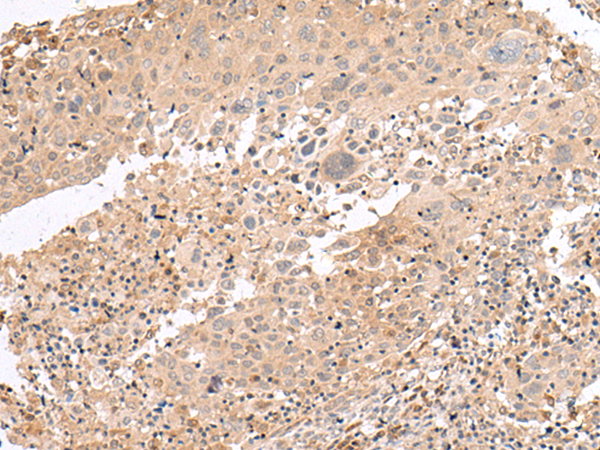
| WB | 咨询技术 | Human,Mouse,Rat |
| IF | 咨询技术 | Human,Mouse,Rat |
| IHC | 1/40-1/200 | Human,Mouse,Rat |
| ICC | 技术咨询 | Human,Mouse,Rat |
| FCM | 咨询技术 | Human,Mouse,Rat |
| Elisa | 1/5000-1/10000 | Human,Mouse,Rat |
| Aliases | Cipp; INADL; hINADL; InaD-like |
| Host/Isotype | Rabbit IgG |
| Antibody Type | Primary antibody |
| Storage | Store at 4°C short term. Aliquot and store at -20°C long term. Avoid freeze/thaw cycles. |
| Species Reactivity | Human |
| Immunogen | Synthetic peptide of human PATJ |
| Formulation | Purified antibody in PBS with 0.05% sodium azide and 50% glycerol. |
+ +
以下是关于PATJ抗体的3篇代表性文献示例(注:以下信息为基于领域知识的概括性描述,实际文献请通过学术数据库核实):
---
1. **文献名称**:*PATJ regulates tight junction formation and polarity in mammalian epithelial cells*
**作者**:Roh MH, Makarova O, Liu CJ, et al.
**摘要**:该研究利用PATJ抗体进行免疫共沉淀和免疫荧光实验,发现PATJ与CRB3、PALS1等蛋白形成复合物,共同调控上皮细胞紧密连接的组装和细胞极性建立,揭示了PATJ在维持上皮屏障功能中的关键作用。
2. **文献名称**:*Downregulation of PATJ in colorectal cancer correlates with poor prognosis and enhanced metastatic potential*
**作者**:Wu Y, Zhang J, Li Q, et al.
**摘要**:通过PATJ抗体免疫组化分析结直肠癌组织,研究发现PATJ表达水平与患者生存率呈正相关,其缺失可能通过破坏细胞极性促进肿瘤侵袭转移,提示PATJ作为潜在预后标志物的价值。
3. **文献名称**:*PATJ interacts with the PAR complex to regulate neuronal polarization during brain development*
**作者**:Hori K, Yasunaga T, Okano H, et al.
**摘要**:该研究在小鼠脑发育模型中,利用PATJ抗体进行蛋白定位和功能缺失实验,证明PATJ通过与PAR3/PAR6/aPKC复合物相互作用调控神经元极性,影响轴突形成和神经迁移过程。
---
如需具体文献全文或出版信息,建议通过PubMed或Google Scholar检索关键词“PATJ antibody”或结合研究主题(如细胞极性、癌症、神经发育)进一步筛选。
The PATJ antibody targets the protein PATJ (Pals1-associated tight junction protein), a crucial component in maintaining cell polarity and tight junction integrity. Belonging to the membrane-associated guanylate kinase (MAGUK) family, PATJ contains multiple PDZ domains that mediate interactions with scaffolding proteins like PALS1 (CRB3 complex) and Par-3/Par-6/aPKC complexes. These interactions are essential for establishing apical-basal polarity in epithelial cells, regulating cell adhesion, and ensuring proper barrier function in tissues. PATJ is also implicated in Hippo and Notch signaling pathways, influencing cell proliferation and differentiation.
Research on PATJ has linked its dysfunction to various diseases, including cancers (e.g., glioblastoma, breast cancer) and neurological disorders (e.g., Alzheimer’s disease). Its role in epithelial-to-mesenchymal transition (EMT) underscores its importance in metastasis and tumor progression. PATJ antibodies are widely used in techniques like Western blotting, immunofluorescence, and co-immunoprecipitation to study protein localization, expression levels, and molecular interactions. These tools help unravel PATJ's regulatory mechanisms in tissue development, homeostasis, and disease pathogenesis, making it a focal point in studies of cell polarity and epithelial biology.
×